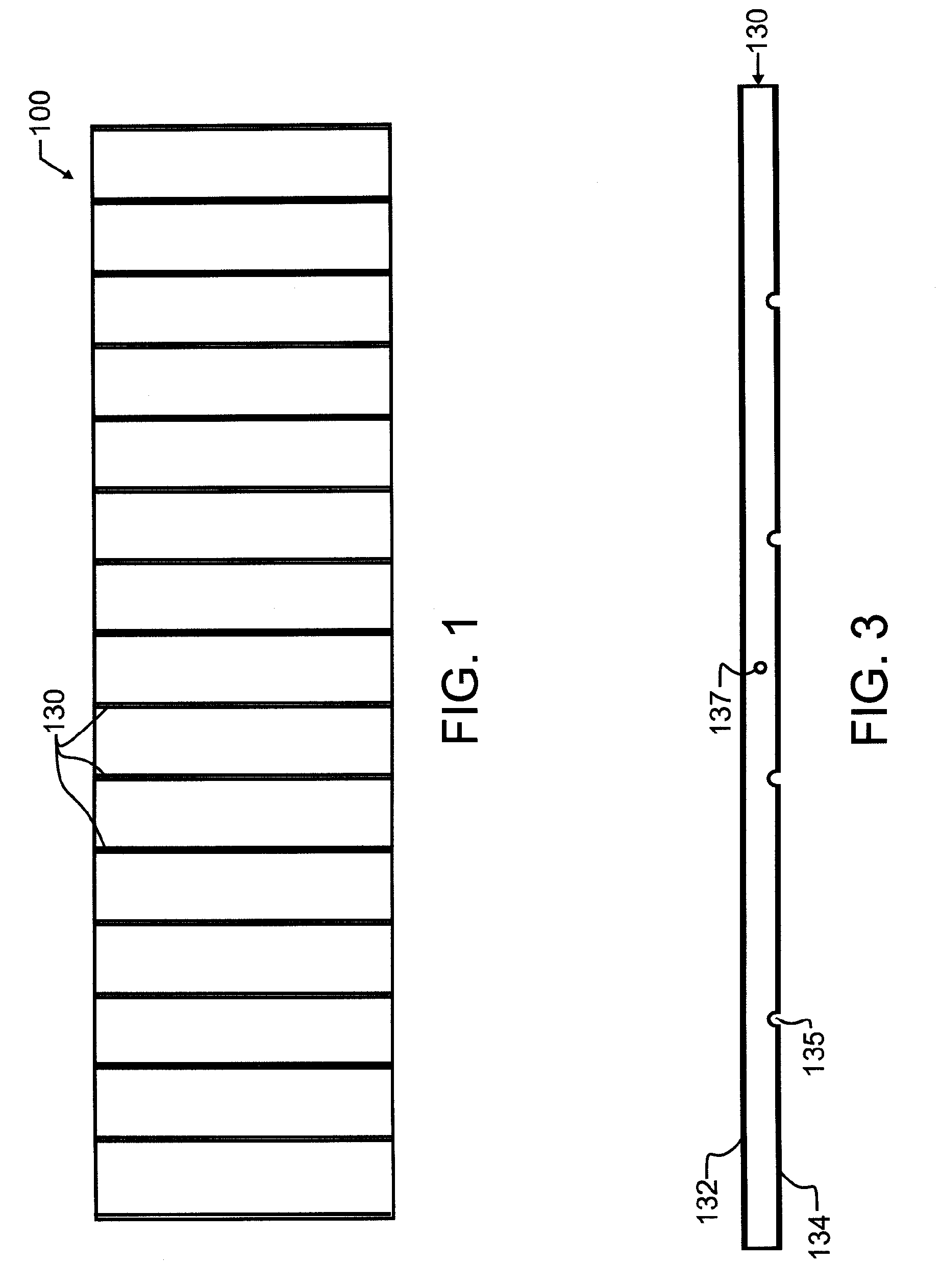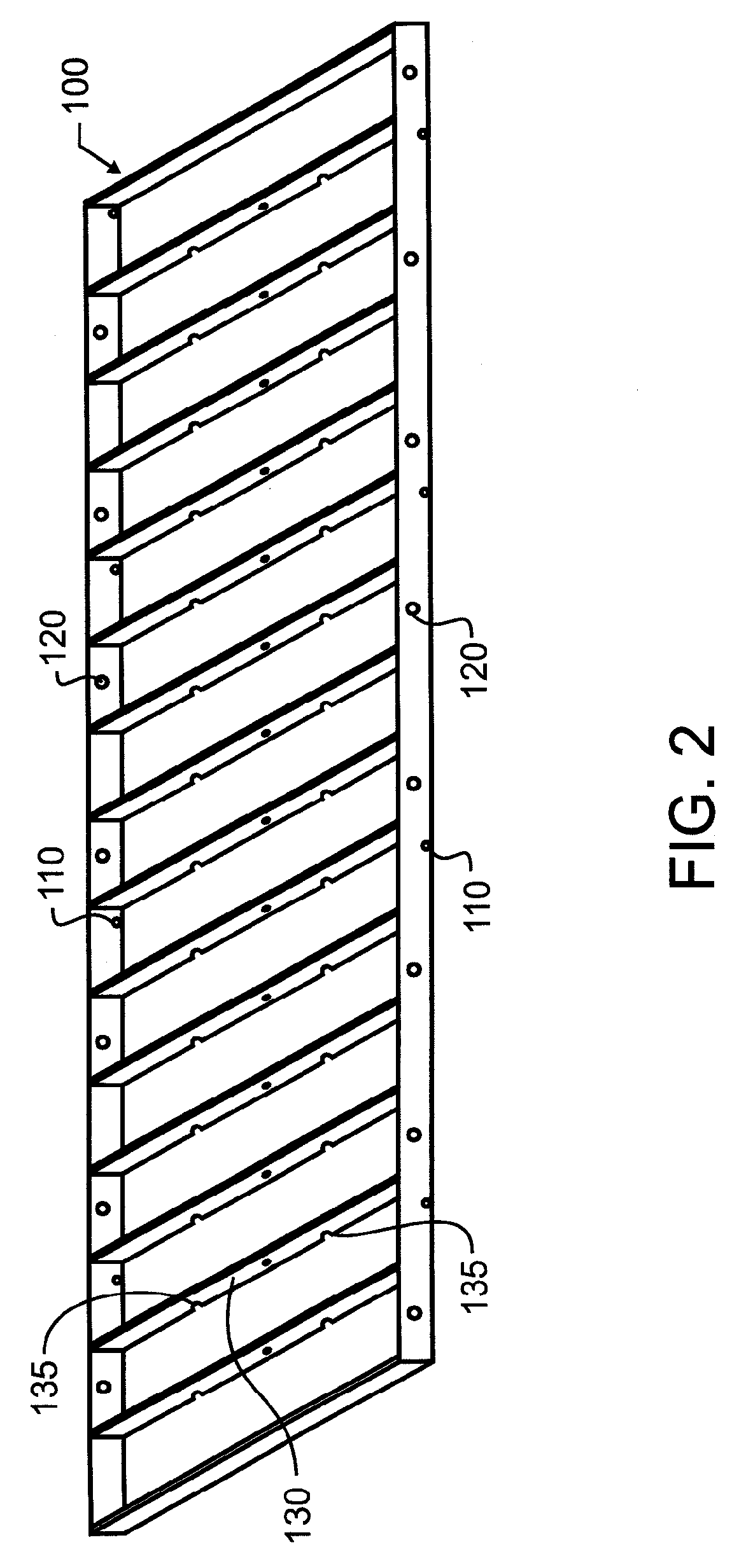While landfill space is dwindling or becoming more costly or distant, industrial and municipal
waste production is increasing.
Consequently, the safe disposal of liquid,
sludge and
solid waste is continually more challenging and complex.
It was most frequently done on a small scale and was not often considered for industrial-scale problems.
Many municipal composting sites are currently
windrow turner operations, though
process control is, unfortunately, quite primitive.
Turning is done seldom enough that microbes in the center of the
pile are rapidly depleted, and the center of the
pile stops composting.
Unfortunately, the repeated mechanical actions that are required for turning destroy some beneficial fungi that rely on large, filamentous growth.
In addition to the
oxygen and mechanical problems introduced by a
windrow system, composting with
windrow turners is typically done in an open, unsheltered area.
When there is too little rain, the
pile is too dry.
When there is too much rain, the pile is wet and requires frequent turning.
Too much rain can also lead to problems with runoff of
leachate.
However, such a facility is very expensive.
Furthermore, with pile composting, various irritating and potentially toxic gases are sometimes produced.
Without high-quality and high-quantity air handling systems, the
atmosphere within an
enclosure can be irritating, if not toxic, to an operator.
Nevertheless, these processes are still performed in relatively few locations and so the demand for such vessels or containers is relatively small.
Unfortunately, many vessel systems are complicated systems which require precision construction techniques and permanent, stable foundations.
This necessarily drives the cost of reactor vessels systems to levels even higher than required for building-type enclosures.
The agitation systems used with in-vessel systems are expensive, prone to wear and failure, and provide agitation at intervals that are not readily controlled with respect to the progress of the composting process.
At the present time, bioconversion processes are only marginally cost-effective.
However, many of these mechanical or chemical counterparts are parts of much larger, higher volume systems or operations.
While the bioconversion processes themselves have been optimized to both lower costs and produce valuable products for sale, it has heretofore been very difficult to provide containers which would keep costs competitive with basic roll-offs, Intermodal containers, and landfill garbage handling.
While the basic containers are then obtained at much more competitive prices, and the handling equipment is in many cases already available, there has still remained a substantial expense in
retrofitting these containers.
Undesirably, this retrofit requires substantial on-site labor and additional materials, the combination which substantially increases the cost of a container.
In addition, the retrofit container would no longer be compatible for shipping purposes, since the new floor would necessarily be elevated several inches higher than the original floor.
In addition, the elevated perforated floor would not support shipping loads.
Furthermore, as the prior art container is elongated even to forty-five and fifty-three foot lengths or more, which helps economically in
processing costs, and also even at typical twenty to forty foot lengths, the air distribution through the
organic matter becomes undesirably inconsistent.
The twenty and forty foot lengths are undesirably long.
Unfortunately, the wooden floor is not resistant to bioconversion products.
Perforations, nail holes and any other surface damage will lead to accelerated
decomposition or failure of the floor.
This surface damage may simply be a result of the
insertion of the
biomass, though many other processes are also known to cause surface damage, including the common practice of anchoring cargo within an Intermodal container by nailing the cargo to the container floor.
When a false floor is incorporated, there is substantial risk of damage to the original floor, such as accidental ignition during
welding.
Additionally, the container
corrosion resistant coatings are necessarily damaged during installation of the false floor.
Finally, the false floor requires internal space, and the container will no longer meet ISO size standards.
Whether caused by perforation
porosity, decreased dimension, or container damage, the end result is that containers once converted no longer meet the ISO requirements, may only be useful for bioconversion, and may have undesirably
short life expectancy.
Not only has prior art conversion permanently altered the use of a container and jeopardized the container integrity, such conversion has also involved many hours of high-cost labor often provided directly at a job site.
Consequently, it has heretofore been impossible to achieve the cost benefits that are associated with factory production.
This has, in turn, driven the capital costs of installing a bioconversion
system higher than desired.
Another cost associated with the prior art has been the biological
processing time desired for the bioconversion process.
 Login to View More
Login to View More 


